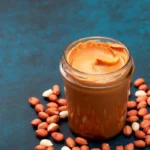
Interesting Facts about kiwifruit:
- Growth and Structure: Kiwifruit grows as a vigorous vine that can reach lengths of up to 10 meters (33 feet), allowing it to spread widely and climb structures for support. This climbing ability is facilitated by its tendrils, which wrap around nearby objects, providing stability and access to sunlight. The vine’s robust growth requires careful management in agricultural settings, including seasonal pruning to maintain optimal health and fruit production.
- Leaves: The leaves of the kiwifruit plant are dark green and heart-shaped, arranged spirally along the stem. This unique leaf structure not only contributes to the plant’s aesthetic appeal but also plays a crucial role in photosynthesis. The large surface area of the leaves allows for efficient sunlight absorption, which is vital for the plant’s growth and fruit development.
- Lifespan and Productivity: Kiwifruit plants can produce fruit for up to 30 years and can survive for more than 50 years under the right conditions. This long lifespan makes kiwifruit cultivation a potentially rewarding investment for farmers, as a well-maintained vine can yield substantial harvests over many years, contributing to sustainable agricultural practices and economic stability.
- Dioecious Nature: Kiwifruit plants are dioecious, meaning each individual plant develops either male or female reproductive organs. To achieve successful pollination and fruit set, both male and female plants must be grown in proximity to one another. This reproductive strategy encourages genetic diversity and ensures that a sufficient number of pollen grains reach the female flowers, which is essential for fruit production.
- Origin: The kiwifruit was first discovered in China, where it was known as “Yang Tao.” This fruit has a rich history that dates back centuries, with its cultivation originating in the lush, subtropical regions of China. The introduction of kiwifruit to New Zealand in the early 20th century by missionaries marked a significant turning point, as it was there that the fruit was renamed “kiwi” after the native flightless bird, symbolizing its New Zealand heritage.
- Pollination: Bees are the primary pollinators of kiwifruit, playing an essential role in the fertilization process. Farmers often enhance natural pollination by manually spreading large quantities of pollen to female plants, especially in areas where bee populations may be insufficient. This practice ensures that a high percentage of flowers are pollinated, leading to a more abundant fruit harvest.
- Botanical Classification: Botanically, kiwifruit is classified as a berry. It features a distinctive brown, fuzzy skin, bright green flesh, and a central circle of dark seeds. This classification is based on its characteristics, including the way it develops from the ovary of a flower. The unique texture and flavor profile of kiwifruit make it a popular choice among consumers.
- Varieties: The size, color of the skin, flesh color, taste, and texture of kiwifruit can vary significantly depending on the species. In addition to the traditional fuzzy varieties, hairless options, such as the Arctic Kiwi, are also commercially available. These variations cater to different consumer preferences and can be cultivated to suit specific climates and growing conditions.
- Production Statistics: Over one million tons of kiwifruit are produced each year, with the majority of this yield coming from Italy, New Zealand, and Chile. These countries have established themselves as leading producers due to their favorable climates and advanced agricultural practices. The global demand for kiwifruit has led to increased cultivation and innovation in production techniques.
- Nutritional Benefits: Kiwifruit is rich in various bioactive compounds that exhibit antioxidant properties, helping to protect the body against free radicals—harmful by-products of metabolism that can contribute to cellular damage. This fruit is particularly high in vitamin C, containing twice as much as oranges, and is also a good source of vitamins E and K. Additionally, kiwifruit provides a significant amount of dietary fiber per gram, making it a nutritious choice for health-conscious consumers.
- Culinary Uses: Kiwifruit is typically consumed raw or in juice form, but it can also be incorporated into a variety of culinary creations, including cakes, ice creams, and other desserts. However, it is important to note that high temperatures during cooking can alter the fruit’s taste and color, which may affect the overall quality of the dish. The versatility of kiwifruit makes it a popular ingredient in both sweet and savory recipes.
- Digestive and Immune Support: Kiwifruit is known for its digestive benefits, as it contains enzymes that aid in breaking down food. The high levels of vitamin C found in kiwifruit also contribute to the enhancement of the immune system, helping to bolster the body’s defenses against infections and illnesses. Regular consumption of kiwifruit may contribute to improved overall health, especially during cold and flu seasons, making it a valuable addition to a balanced diet.
- Allergic Reactions: While kiwifruit is nutritious and beneficial for many, it can trigger allergic reactions in sensitive individuals. Symptoms of kiwifruit allergy can range from mild oral irritation to severe anaphylaxis, necessitating medical intervention in extreme cases. Those with known allergies to other fruits, particularly latex or certain tree fruits, should exercise caution when consuming kiwifruit and consult with healthcare professionals if they experience adverse reactions.
- Caloric Content: A medium-sized kiwifruit contains only 46 calories, making it a low-calorie snack option that is both satisfying and nutritious. Its low caloric density allows individuals to enjoy the fruit without significantly impacting their daily caloric intake. This makes kiwifruit an excellent choice for those looking to maintain a healthy weight while still indulging in delicious flavors.
- Animal Consumption: Kiwifruit is not only enjoyed by humans but also by various animals, including monkeys and deer. These animals are attracted to the fruit’s sweet taste and nutritional benefits, contributing to its role in the ecosystem. The consumption of kiwifruit by wildlife can aid in seed dispersal, promoting the growth of new plants and maintaining biodiversity in the areas where these fruits are cultivated.
- Protein Actinidain: Kiwifruit contains a unique protein called actinidain, which has the ability to soften meat. This enzyme is particularly useful in culinary applications, as it can tenderize tough cuts of meat and prevent the solidification of gelatin in desserts. This property makes kiwifruit a popular ingredient in marinades and recipes that require a delicate balance of flavors and textures.
- Sleep Benefits: Interestingly, studies suggest that eating two kiwifruits an hour before bedtime may help individuals fall asleep more quickly and improve sleep quality. The fruit’s high antioxidant content, along with its ability to regulate serotonin levels, may contribute to enhanced sleep patterns. This makes kiwifruit not only a delicious snack but also a potential natural remedy for those seeking better rest and rejuvenation.
Frequently Asked Questions about Kiwifruit:
1. What is kiwifruit?
Kiwifruit, also known as kiwi or Chinese gooseberry, is a small, brown, fuzzy fruit with bright green or golden flesh and tiny black seeds. It is native to China but is now grown in many countries, including New Zealand, Italy, and the United States. Kiwifruit is known for its sweet and tangy flavor and is rich in vitamins C, K, and E, as well as dietary fiber.
2. How do you eat kiwifruit?
Kiwifruit can be eaten raw or used in various dishes. To eat a kiwifruit, you can simply cut it in half and scoop out the flesh with a spoon. Alternatively, you can peel the skin off with a knife or a vegetable peeler and slice it into rounds or wedges. Kiwifruit can be added to salads, smoothies, desserts, or eaten on its own as a snack.
3. What are the health benefits of kiwifruit?
Kiwifruit offers several health benefits, including:
- High in Vitamin C: Supports the immune system and skin health.
- Rich in Antioxidants: Helps combat oxidative stress in the body.
- Dietary Fiber: Aids in digestion and promotes gut health.
- Low in Calories: A nutritious option for weight management.
- Supports Heart Health: May help reduce blood pressure and improve cholesterol levels.
4. How do you store kiwifruit?
Kiwifruit should be stored at room temperature until ripe. Once ripe, it can be stored in the refrigerator to extend its shelf life. Whole kiwifruit can last up to a week in the fridge, while cut kiwifruit should be consumed within a few days for the best flavor and texture. To prevent browning, you can store cut kiwifruit in an airtight container.
5. Can you eat kiwifruit skin?
Yes, kiwifruit skin is edible and contains additional nutrients and fiber. However, the texture may be unappealing to some people due to its fuzziness. If you choose to eat the skin, make sure to wash the fruit thoroughly to remove any dirt or pesticides.
6. Are there different varieties of kiwifruit?
Yes, there are several varieties of kiwifruit, including:
- Green Kiwi (Hayward): The most common variety with a sweet-tart flavor and green flesh.
- Gold Kiwi (Zespri SunGold): Sweeter than green kiwi, with smooth, bronze skin and yellow flesh.
- Hardy Kiwi (Arctic Kiwi): Smaller, smooth-skinned, and can be eaten whole, with a flavor similar to green kiwi.
7. Is kiwifruit safe for everyone to eat?
While kiwifruit is generally safe for most people, some individuals may have allergies to it, particularly those who are allergic to latex or certain fruits like bananas and avocados. If you experience any adverse reactions after eating kiwifruit, it’s best to consult a healthcare professional.
8. How do you know when kiwifruit is ripe?
A ripe kiwifruit will yield slightly to gentle pressure when squeezed. It should feel slightly soft but not mushy. If it’s too firm, it may need a few days to ripen at room temperature. Overripe kiwifruit will feel very soft and may have dark spots or an off smell.
9. Can kiwifruit be frozen?
Yes, kiwifruit can be frozen. To freeze, peel and slice the fruit, then place it in a single layer on a baking sheet to prevent clumping. Once frozen, transfer the slices to an airtight container or freezer bag. Frozen kiwifruit is great for smoothies or as a cold snack, but the texture may change once thawed.
10. What recipes can I make with kiwifruit?
Kiwifruit can be used in a variety of recipes, including:
- Fruit Salads: Combine with other fruits for a refreshing dish.
- Smoothies: Blend with yogurt, spinach, and other fruits for a nutritious drink.
- Desserts: Use in tarts, pavlovas, or as a topping for ice cream.
- Salsas: Mix with tomatoes, onions, and cilantro for a unique salsa.








